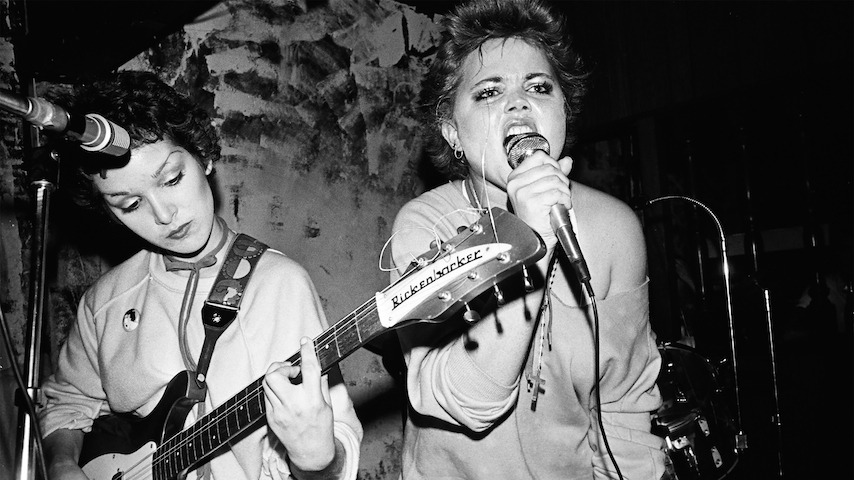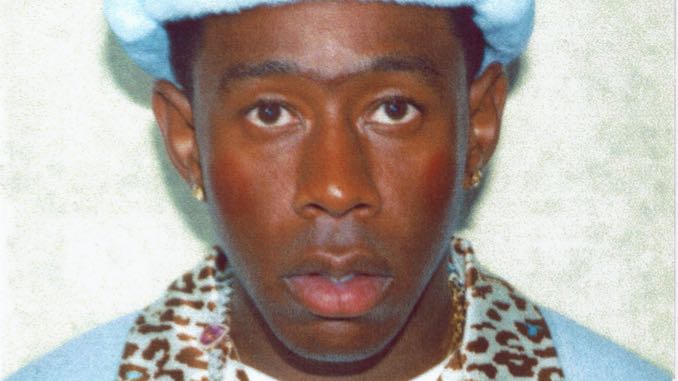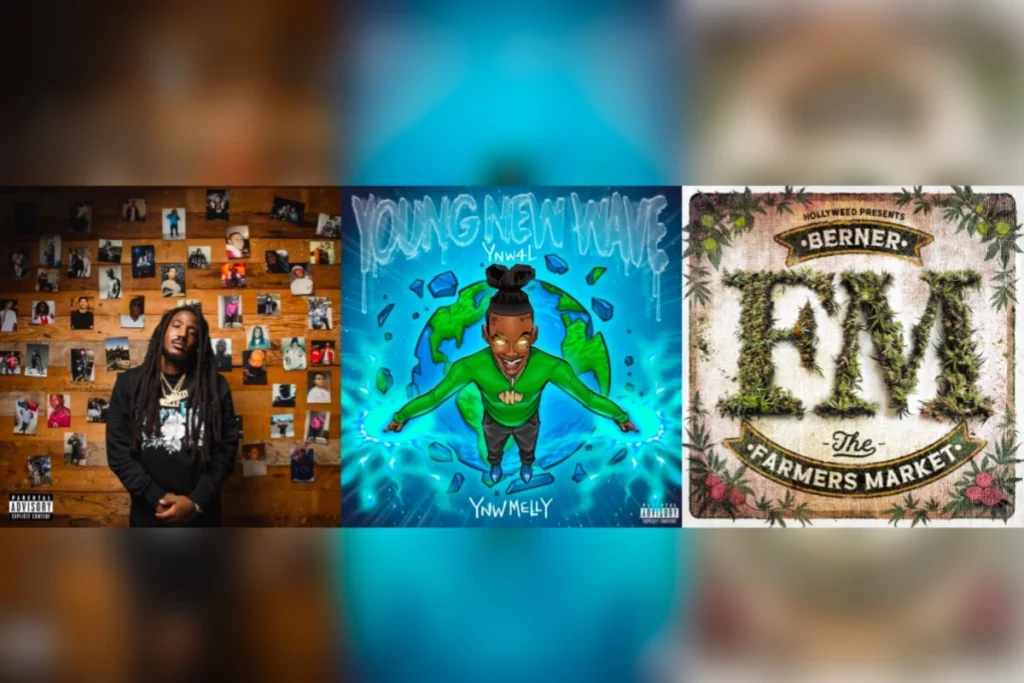Success in artistic fields is subjective, but The Go-Go’s were successful in an unprecedented way. The L.A. punk-turned-pop band were the first all-female group to write their own songs and play their own instruments on a Billboard number one album. They achieved this feat with 1981’s Beauty and the Beat, and no other all-female band has done it since. This may be an indictment of the industry and listeners at large, who are perhaps still unwilling to take a group of women seriously. Or maybe it’s just that music written and performed by an all-female group tends to be more subversive, and as a result, has no chance of topping the Billboard charts. In any case, The Go-Go’s achieved the unthinkable.
The story of this ’80s new wave band is captured in a new self-titled Showtime documentary directed by Alison Ellwood (Laurel Canyon: A Place in Time, History of The Eagles). Famous for contagiously harmonious tunes like “We Got The Beat,” “Our Lips Are Sealed” and “This Town,” and their bold, playful image, you’d think that The Go-Go’s were put together via some Monkees-like scheme, but they’re quick to point out they were not an industry-devised, cookie cutter pop group and they “had no svengali” (a jab at The Runaways’ manager and producer Kim Fowley). Members of The Go-Go’s met in the late ’70s L.A. punk scene, but they weren’t interested in sounding horrible and playing in small clubs for clout—their ambition was far greater. However, that ambition was not without consequences, as it led to the departure of their original bassist Margo Olavarria, who thought they were becoming over-commercialized.
The film contains the hallmarks of most rock ‘n’ roll documentaries—drugs, ego, arguments, breakups and reunions—but their bright personalities and earnestness prevents it from becoming just another stale, over-mythologized and debauchery-filled movie. There’s a clip of lead singer Belinda Carlisle sheepishly admitting in an early interview that she wasn’t always a rambunctious punk: “I was a really good student and I was a cheerleader…Does anybody have a cigarette?” Later, drummer Gina Schock bursts into gregarious laughter about the breakup of her brief romantic relationship with guitarist Jane Wiedlin: “You think something like that’s gonna fuck with the band? No way.”
Before they topped the charts and were introduced by Dan Aykroyd at the MTV VMAs as “one of the greatest all-girl groups of all time,” they had to put in their dues. After a number of self-described “crappy” early rehearsals, they began to improve, later becoming the house band at The Whisky, which got them support slots for two U.K. ska behemoths The Specials and Madness. Those shows led to a British tour opening for those bands, which wouldn’t have happened without The Go-Go’s manager pawning jewelry and selling her car to help fund it. While the tour ultimately gave the band a huge boost, it also led to the most disturbing and outrageous scene in the documentary: National Front skinheads sexually harassing and throwing things at this exuberant all-female pop band from America. We don’t know for sure whether members of The Specials or Madness actively did anything to quell the abuse hurled at The Go-Go’s (beyond consoling them in the dressing room afterwards, which they apparently did), but one hopes they tried.
Much like The Strokes, the band’s success in the U.K. helped propel their status at home. Upon returning to Los Angeles, The Go-Go’s started selling out shows, and because they were also armed with a strong collection of songs, their ascent seemed inevitable—that is, until they realized getting signed would be an uphill battle. Even after they were pulling in sizable crowds, they were still snubbed by several record labels who blatantly refused to sign them because there weren’t many examples of a commercially viable all-girl band at the time. But Miles Copeland, manager of The Police and brother of Stewart Copeland, swooped in and signed them to his own label because he saw them as part of the new rock vanguard.
After cementing their core lineup (which was not without its drama), getting signed and fine-tuning their sound with producer Richard Gottehrer, The Go-Go’s were on their way. With MTV regularly broadcasting their “Our Lips Are Sealed” video and the band booked to open for The Police on their world tour, it was full steam ahead. Impressively, their debut album Beauty and the Beat actually surpassed The Police’s album on the charts while both bands were on tour together. It’s the rosy high point of the film before everything started to fall apart.
Though each band member was a drug user, it started to get ugly when guitarist Charlotte Caffey became addicted to heroin. Then came the publishing disputes, touring exhaustion and lack of communication, which essentially spelled the end of the band after three albums. Guitarist Jane Wiedlin said of the time, “There would be a lot of questions about what our relationship with each other was like. [Wiedlin mimicking] ‘Oh we love each other. We’re like sisters.’ Yeah, we’re like sisters who fucking stab each other in the back.”
The band’s dramatic story arc is one reason why it’s such a tantalizing film. Before there were nonstop photo shoots and large tours with adoring fans, they were wearing trash bag dresses in grimy clubs, playing shows with cult acts like Pere Ubu and X and touring with nothing more than a polaroid camera, $2,000 and two grams of coke. All of a sudden a band with serious DIY punk roots became an unstoppable machine (as Carlisle described them) whose members were phoning it in at huge shows while each member was in crisis. Caffey’s drug problem was so out of control that known madman Ozzy Osbourne supposedly threw her out of a dressing room. Eventually, she checked into rehab and Wiedlin quit The Go-Go’s, which became the tipping point for the band’s breakup. But the split was not without a few added low blows. A schism emerged and pitted Schock and bassist Kathy Valentine against Carlisle and Caffey because the former duo wanted to save the band and the latter wanted to end it. According to Schock and Valentine, either Carlisle or Caffey said something to the effect of “She writes the hits and I’m the voice,” which led to rage and years of bitterness.
It’s a sad ending to a band who bonded over their rebel outsider status and just wanted to follow in the footsteps of The Shirelles and The Shangri-Las. Their gritty, us-against-the-world ambition turned into a cutthroat business that pitted members against each other and heightened their worst tendencies. Thankfully, though, no members lost their lives to their reckless lifestyle, but it was a pretty dramatic rise and fall. With each member, both past and present, willing to share their full range of emotions during the most pressing moments in their career, viewers of this documentary get a compelling story of a band that was pushed to their limits at every turn. The Go-Go’s eventually reunited after the bad blood subsided, and there’s an especially touching scene to close: The classic lineup rehearsing “We Got The Beat” for the first time in a while and vocalizing in time with the song, “We used to have the beat. Remember when we had the beat.” Then, Wiedlin proclaims, “Oh my god, do we have the motherfucking beat?!”
The film doesn’t take a clear stance on whether it’s a cautionary tale for the industry, but it could certainly be read as one. Back in the 1980s, the industry could propel any artist they wanted, practically just by throwing them on tour with the biggest bands of the day, and for The Go-Go’s, that meant punk flyers got ditched for world tour posters. That may not have been an inherently bad choice (unless you’re strict about punk ideals), but it was clear that this group couldn’t handle the associated pressures, and more specifically, the reality of members raking in dramatically different paychecks.
At the end of the day, their lasting pop songs, irresistible stage presence and complicated relationships with each other make for an enchanting documentary. The Go-Go’s were mystifying in a way that other bands weren’t—writing songs that contended with the best pop artists of the day as well as the best punk bands. Anyone skeptical of serious musicianship coexisting with pop effervescence should seal their lips upon watching The Go-Go’s.
Lizzie Manno is an associate music editor, Coldplay apologist, bread obsessive and lover of all things indie, punk and shoegaze at Paste. Follow her on Twitter @LizzieManno




